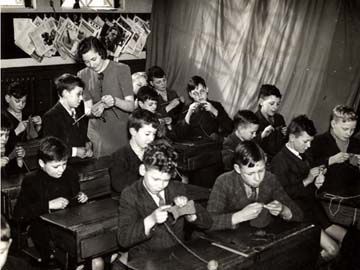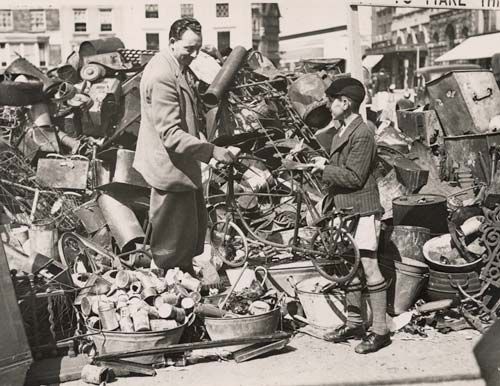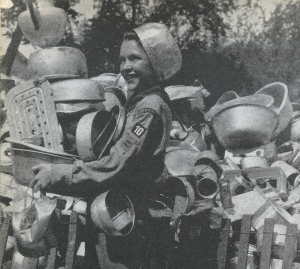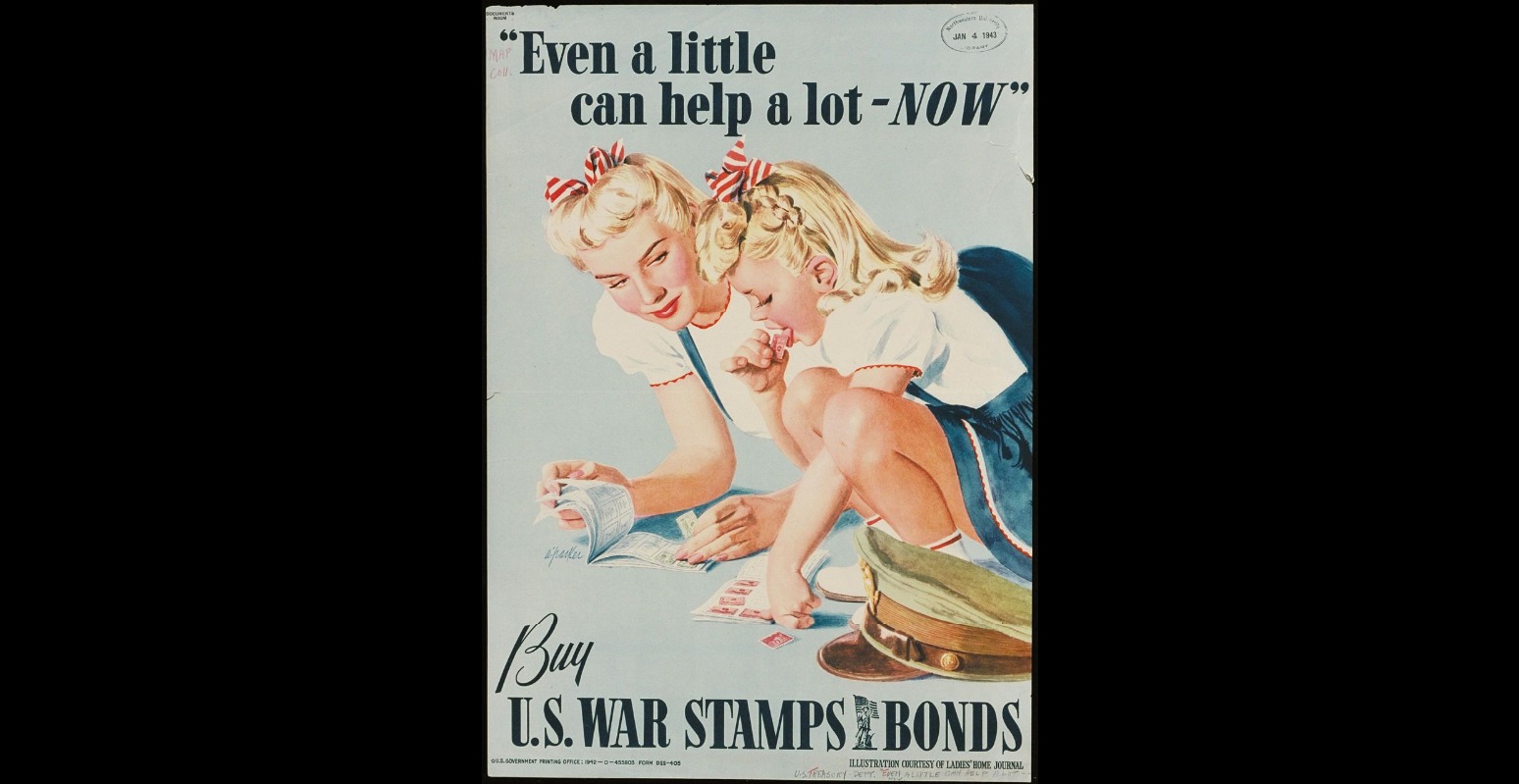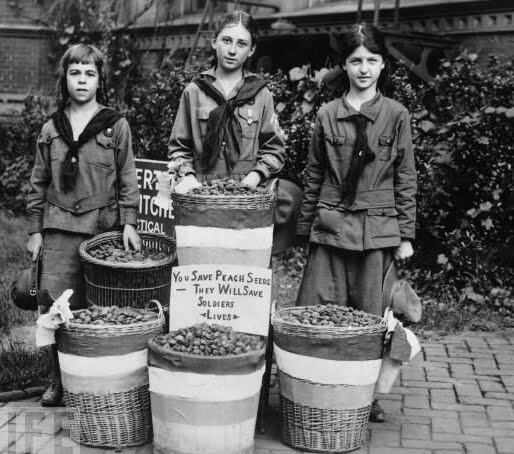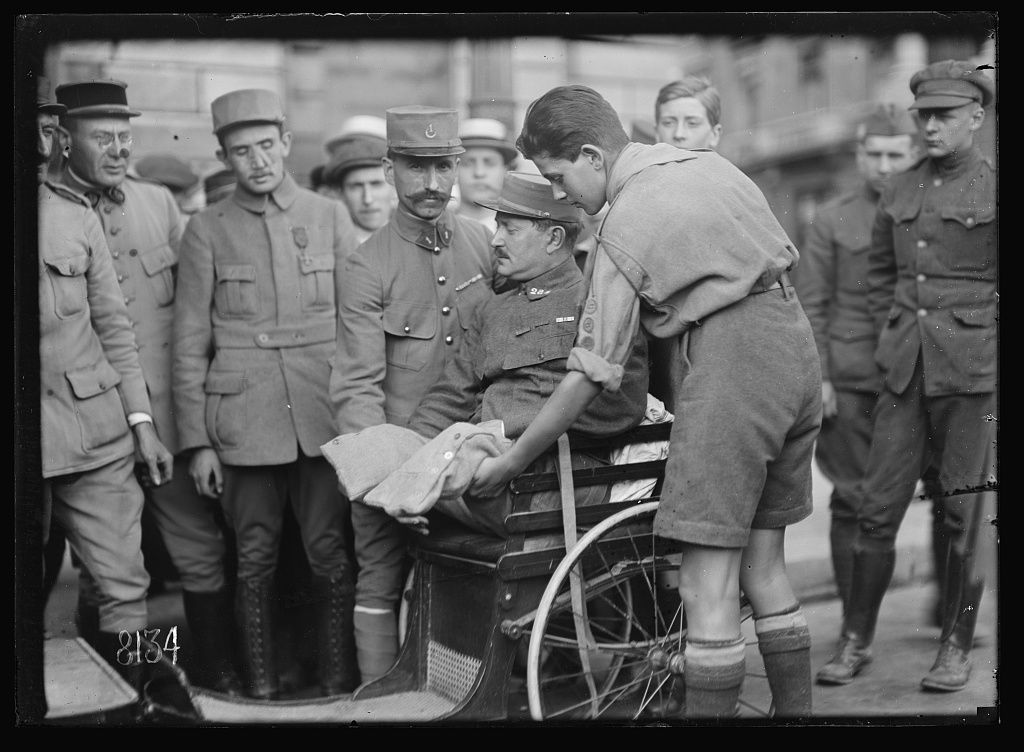This album was created by a member of the TPS Teachers Network, a professional social media network for educators, funded by a grant from the Library of Congress. For more information, visit tpsteachersnetwork.org.
Kids Helping Others - SEL
Album Description
These photos tell the story of what kids have done throughout out modern history to help others. Take these photos and have students research current projects by kids to help a group or address a group issue. This would be a great way to help students learn empathy and motivate them to think of others.
Gotham Schoolboys Knitting (1).jpg
Teaching Notes
Children were also expected to contribute to the war effort. The photograph below shows schoolboys in Gotham, Nottinghamshire knitting clothes. During the war people knitted clothing for soldiers and children were proud of making socks or scarves to be sent to soldiers.
Northampton Salvage Week.jpg
Teaching Notes
Children were also encouraged to help recycle materials that were in short supply to make equipment needed for the war. Many aluminum items were called in for recycling so that they could be used to make aircraft! The photograph below shows metal gathered during Northampton Salvage Week.
War Stamps.jpeg
Teaching Notes
Mother and daughter in matching clothes paste stamps in a war savings album next to an officer's military hat (possibly belonging to the girl's father). ; [illustrated by] A. Parker.
Girl Scouts & Peach Pits
Teaching Notes
The March 1918 edition of The Rally (the first Girl Scout magazine) introduced a Girl Scout War Service Award to “stimulate thoughtful direct effort that would have a distinct value to those in the war.” To earn the award, girls had to knit two pounds of wool, make 50 jars of jam, and sell at least 10 Liberty Bonds. The Rally also directed Girl Scouts to collect and dry fruit pits and nut shells:
A CAMPAIGN FOR PITS
Gather up the peach pits,
Olive pits as well.
Every prune and date seed
Every walnut shell.
The magazine article explained that “200 peach pits or seven pounds of nut shells produced enough carbon for one filter for a solider’s gas mask” (GS Collector’s Guide, p. 87). With the German military deploying highly toxic chlorine gas against the Allied troops, the Red Cross and other organizations launched peach pit collection drives across the country, according to The Atlantic magazine.
Includes a wonderful lesson about the use of peach pits in WWI as well as a tie in with a picture book on the topic.
Boy Scout helping transport a soldier who has come down to Red Cross to have new legs fitted.
Teaching Notes
Here is some background on United States Boy Scouts World War I activities & service projects along with a blog post about World War I and the Boy Scouts.
